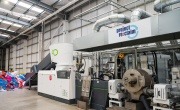England recycling rate hit by fall in composting

The Department for Environment, Food & Rural Affairs (Defra) has released new quarterly municipal waste figures that show that local authorities (LAs) in England recycled, composted or reused 47.1 per cent of ‘waste from households’ between July and September 2013 (the second quarter of the year 2013/14).
The ‘Provisional statistics on waste managed by local authorities in England including July to September 2013’ show that of the 5.7 million tonnes of household waste collected in the quarter (i.e. waste collected through ‘litter collection rounds’), 47.1 per cent was recycled, reused or composted, 37 per cent was landfilled, and 14 per cent went for incineration with energy recovery. (However, the overall amount of local authority managed waste disposed to landfill or incineration fell by almost five per cent in July to September 2013 compared to year before, with landfill dropping by seven per cent and incineration continuing to gain popularity as a waste disposal method, increasing by three per cent.)
Notably, the figures show that councils recycled 0.5 per cent less material than in the same period the year before, due to a dramatic decrease in the amount of green waste sent for recycling.
Indeed, despite almost half (47 per cent) of all the recycling of ‘waste from households’ comprising food and garden waste, the second quarter of the year 2013/14 saw an 11 per cent drop in the amount of green waste sent for recycling than in the same period in 2012/13. This is despite the summer of 2013 being remarkably warm, and the summer of 2012 unseasonably wet.
However, despite the drop in green waste recycling, the annual rate of recycling was relatively stable, dropping one percentage point to 43.9 per cent in the year to September 2013, compared to the 12 months running to June 2013.
In terms of waste composition, the majority of dry recycling collected comprised of: paper and card (41 per cent); glass (20 per cent); ‘other materials’ (18 per cent); scrap metals, including waste electrical and electronic equipment (nine per cent); plastic (seven per cent); metals (four per cent); and textiles (two per cent).
Recycling increases remain low
Despite the figures showing that the majority of waste collected is sent for recycling, increases in recycling rates in England remain low, if they register at all. Indeed, the stagnation of the recycling rate led Defra to warn last year that if the recycling increases remain at the rate they are at now, England’s recycling level will be ‘insufficient’ to meet the EU’s target of recycling 50 per cent of household waste by 2020. (Despite these warnings, Defra has said that from April 2014, it will ‘step back’ on some of its waste policy work, due to budget cuts.)
From August 2014, Defra intends to present annual estimates for calendar years instead of financial years. The government department has also decided to stop producing quarterly regional estimates, but will continue to produce annual statistics by region and local authority, all through the WasteDataFlow portal.
The next statistics release will be in August 2014 and cover October to December 2013.
Read the ‘Provisional statistics on waste managed by local authorities in England including July to September 2013’.





